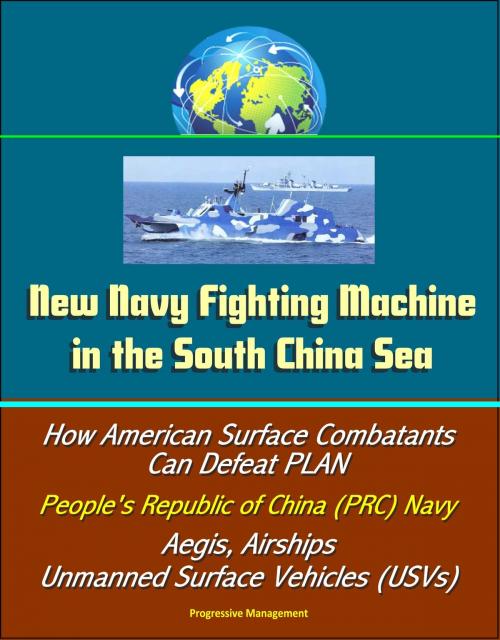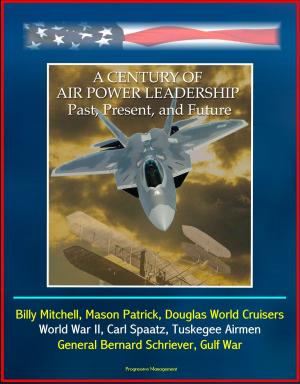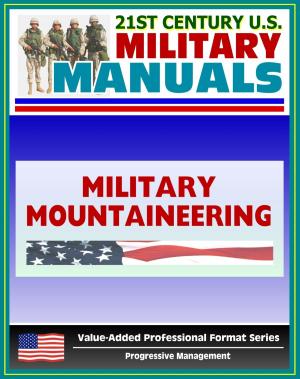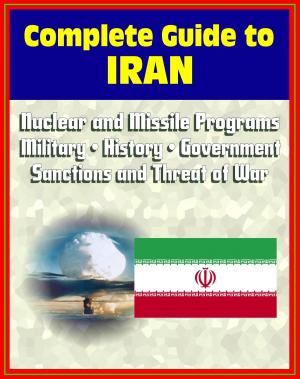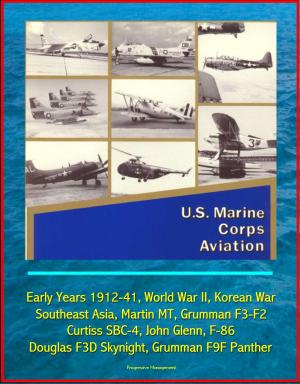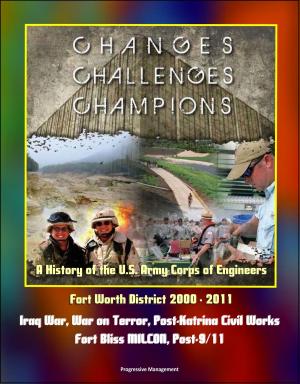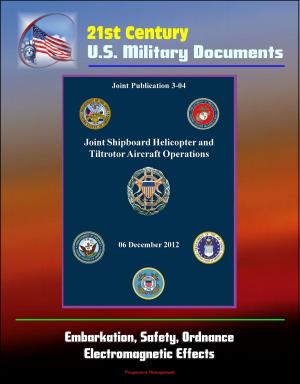New Navy Fighting Machine in the South China Sea - How American Surface Combatants Can Defeat PLAN, People's Republic of China (PRC) Navy, Aegis, Airships, Unmanned Surface Vehicles (USVs)
Nonfiction, History, Asian, China, Military, Naval| Author: | Progressive Management | ISBN: | 9781311457875 |
| Publisher: | Progressive Management | Publication: | August 22, 2014 |
| Imprint: | Smashwords Edition | Language: | English |
| Author: | Progressive Management |
| ISBN: | 9781311457875 |
| Publisher: | Progressive Management |
| Publication: | August 22, 2014 |
| Imprint: | Smashwords Edition |
| Language: | English |
Through the perspective of Wayne P. Hughes' missile salvo equation, this research examined naval surface forces of the People's Republic of China (PRC) and the United States in order to demonstrate how American surface combatants can defeat PRC anti-access area denial (A2AD) measures in the South China Sea (SCS). Hughes' equation reveals that advantages for American surface forces are obtained by increasing fleet numbers, counter-targeting (CT), and increased scouting. This thesis advocates fleet growth as articulated in Hughes' New Navy Fighting Machine (NNFM) study. Comparisons of the NNFM, the U.S. fleet, and the PRC fleet demonstrate both the disparity facing the American surface forces, and the near parity obtained in the NNFM. CT through unmanned surface vehicles (USVs), and naval obscurants provide American surface forces increased staying power and tactical advantage. Scouting and communications networking through a theater wide constellation of airships provide the American fleet with persistent situational awareness of the battle space, tactical communications with subsurface forces, and improved emissions control (EMCON) measures for surface forces. The distributive properties of the NNFM, combined with this study's CT and scouting findings, offer American surface combatants success over the PRC Navy in the SCS scenario.
The western Pacific is home to many areas of growing contention. In the past, a predominant concern of the U.S. centered upon potential PRC military aggression towards Taiwan. However, speculation over oil and gas reserves embedded in the SCS has increasingly drawn attention to the waters between Vietnam and the Philippines. Claims assertions have already generated tensions between Southeastern Asian neighbors and have the potential to grow into armed conflict as the PRC increases their level of force within the region. Involvement in the SCS region is intended to uphold international maritime law and the rights of countries less able to defend themselves.
CHAPTER I - INTRODUCTION * A. CONSIDERATIONS FOR POTENTIAL ARMED CONFLICT * 1. International Contention in the South China Sea * a. PRC's SCS Perspective * b. United States SCS Perspective * 2. Anti-Access/Area Denial (A2AD): What the PRC is Expected to Bring to the Fight * a. PRC Missile Overview * b. PRC Fleet Overview * B. UNDERSTANDING NAVAL MISSILE WARFARE THROUGH MATHEMATICAL MODELING * 1. Salvo Model of Modern Missile Combat * C. THE NEW NAVY FIGHTING MACHINE * 1. Historical Similarities and Rationale * 2. Composition of the New Navy Fighting Machine * a. The NNFM Green Water Fleet * b. The NNFM Blue Water Fleet * 3. Numbers Comparison between NNFM, Current U.S. Fleet, and PLA-N * 4. Conclusions * CHAPTER II - COUNTER TARGETING IN THE NNFM * A. PRINCIPLES OF COUNTER-TARGETING (CT) * B. USV AS ASCM CT ASSET * C. USV AS SURFACE EMISSIONS ASSET * 1. Example of Low Probability Detection Interception (LPDI) DoD Technology * 2. USVs at EMCON * D. NAVAL OBSCURANTS * E. CONCLUSIONS * CHAPTER III - FLEET LIGHTER THAN AIR TECHNOLOGY (LTA) * A. PRINCIPLES AND BACKGROUND OF USN LIGHTER THAN AIR TECHNOLOGY (LTA) * 1. Design Principles * 2. Graceful Degradation * 3. USN LTA Program * 4. Prejudice * 5. Resurging Interest in LTA * B. LTA AS AEGIS OVER THE HORIZON TARGETING (OTHT) PLATFORM * C. C4ISR AIRSHIP IN THE SCS * 1. The USAF Blue Devil II as NNFM C4ISR Airship * 2. NNFM C4ISR Airship SCS Operations * a. Operating Area * b. C4ISR, Footprint, and Manning * c. Basing, Transit Times, and Endurance * d. Vital Airship Constellation EMCON Benefits * e. Misdirection using Airships * 3. Take Charge and Move Out (TACAMO) * D. BALLOON-BORNE REPEATER * E. CONCLUSIONS * CHAPTER IV - CONCLUSION * CHAPTER V - RECOMMENDATION FOR FUTURE RESEARCH *
Through the perspective of Wayne P. Hughes' missile salvo equation, this research examined naval surface forces of the People's Republic of China (PRC) and the United States in order to demonstrate how American surface combatants can defeat PRC anti-access area denial (A2AD) measures in the South China Sea (SCS). Hughes' equation reveals that advantages for American surface forces are obtained by increasing fleet numbers, counter-targeting (CT), and increased scouting. This thesis advocates fleet growth as articulated in Hughes' New Navy Fighting Machine (NNFM) study. Comparisons of the NNFM, the U.S. fleet, and the PRC fleet demonstrate both the disparity facing the American surface forces, and the near parity obtained in the NNFM. CT through unmanned surface vehicles (USVs), and naval obscurants provide American surface forces increased staying power and tactical advantage. Scouting and communications networking through a theater wide constellation of airships provide the American fleet with persistent situational awareness of the battle space, tactical communications with subsurface forces, and improved emissions control (EMCON) measures for surface forces. The distributive properties of the NNFM, combined with this study's CT and scouting findings, offer American surface combatants success over the PRC Navy in the SCS scenario.
The western Pacific is home to many areas of growing contention. In the past, a predominant concern of the U.S. centered upon potential PRC military aggression towards Taiwan. However, speculation over oil and gas reserves embedded in the SCS has increasingly drawn attention to the waters between Vietnam and the Philippines. Claims assertions have already generated tensions between Southeastern Asian neighbors and have the potential to grow into armed conflict as the PRC increases their level of force within the region. Involvement in the SCS region is intended to uphold international maritime law and the rights of countries less able to defend themselves.
CHAPTER I - INTRODUCTION * A. CONSIDERATIONS FOR POTENTIAL ARMED CONFLICT * 1. International Contention in the South China Sea * a. PRC's SCS Perspective * b. United States SCS Perspective * 2. Anti-Access/Area Denial (A2AD): What the PRC is Expected to Bring to the Fight * a. PRC Missile Overview * b. PRC Fleet Overview * B. UNDERSTANDING NAVAL MISSILE WARFARE THROUGH MATHEMATICAL MODELING * 1. Salvo Model of Modern Missile Combat * C. THE NEW NAVY FIGHTING MACHINE * 1. Historical Similarities and Rationale * 2. Composition of the New Navy Fighting Machine * a. The NNFM Green Water Fleet * b. The NNFM Blue Water Fleet * 3. Numbers Comparison between NNFM, Current U.S. Fleet, and PLA-N * 4. Conclusions * CHAPTER II - COUNTER TARGETING IN THE NNFM * A. PRINCIPLES OF COUNTER-TARGETING (CT) * B. USV AS ASCM CT ASSET * C. USV AS SURFACE EMISSIONS ASSET * 1. Example of Low Probability Detection Interception (LPDI) DoD Technology * 2. USVs at EMCON * D. NAVAL OBSCURANTS * E. CONCLUSIONS * CHAPTER III - FLEET LIGHTER THAN AIR TECHNOLOGY (LTA) * A. PRINCIPLES AND BACKGROUND OF USN LIGHTER THAN AIR TECHNOLOGY (LTA) * 1. Design Principles * 2. Graceful Degradation * 3. USN LTA Program * 4. Prejudice * 5. Resurging Interest in LTA * B. LTA AS AEGIS OVER THE HORIZON TARGETING (OTHT) PLATFORM * C. C4ISR AIRSHIP IN THE SCS * 1. The USAF Blue Devil II as NNFM C4ISR Airship * 2. NNFM C4ISR Airship SCS Operations * a. Operating Area * b. C4ISR, Footprint, and Manning * c. Basing, Transit Times, and Endurance * d. Vital Airship Constellation EMCON Benefits * e. Misdirection using Airships * 3. Take Charge and Move Out (TACAMO) * D. BALLOON-BORNE REPEATER * E. CONCLUSIONS * CHAPTER IV - CONCLUSION * CHAPTER V - RECOMMENDATION FOR FUTURE RESEARCH *
